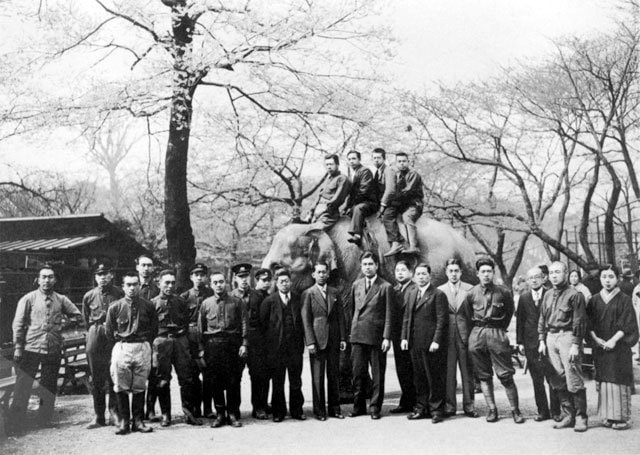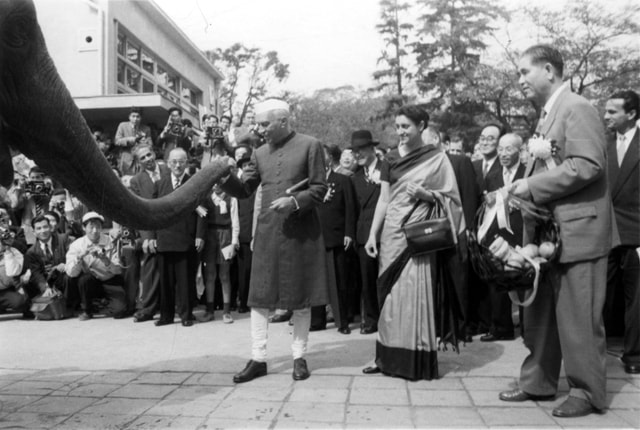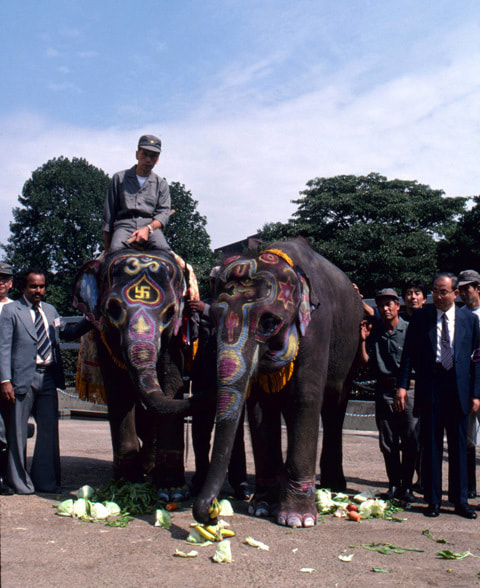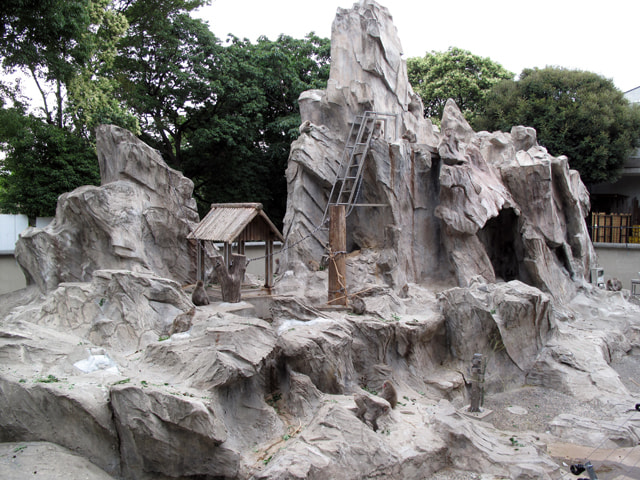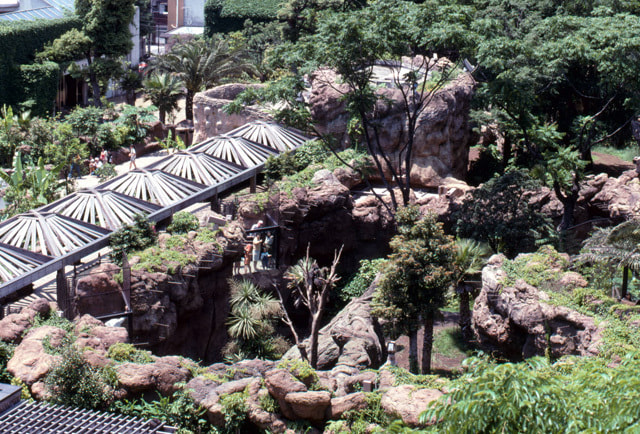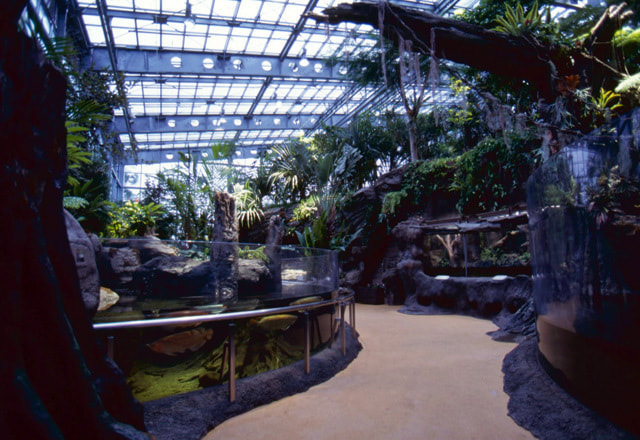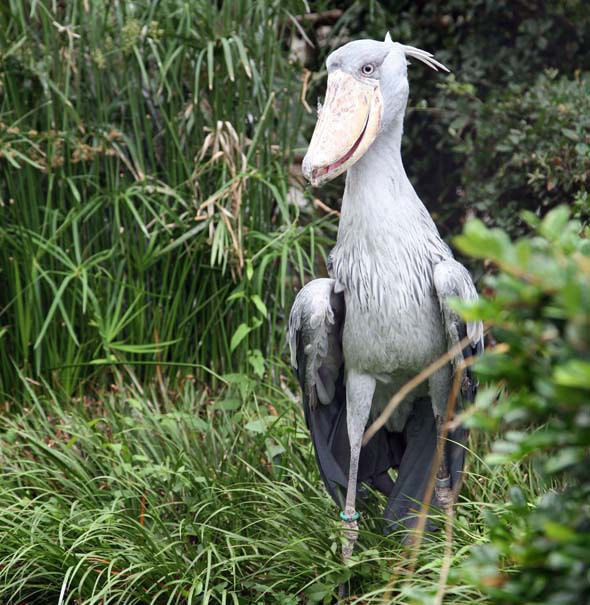
Shoebill, a popular bird in the Ueno Zoo
The Second World War from 1939 to 1945 affected not only exchanges of animals but also assembling of staff members. Three animal handlers out of 15 went to the war in 1938, and Zoo Director Tadamichi Koga was drafted into the forces in 1941, so Saburo Fukuda, a technical expert, was appointed acting director. A feed shortage became aggravated, and animal handlers compensated for the lack of feed by mixing branches and leaves of roadside trees and tea dregs with the feed. Iron materials of benches and fences in the zoo were also supplied to the government. In 1943, Tokyo City merged with Tokyo Prefecture to form Tokyo Metropolis, and the Ueno Zoo was ordered to slaughter 27 fierce animals. When the war was over in 1945, the zoo lost elephants, tigers, lions and bears due to the slaughter, and there were air-raid shelters and potato fields in its devastated grounds. Zoo Director Koga, who went to the war, resumed his office, and restoration work gradually began. (continued in the lower column)
The director system was established in 1937, and Tadamichi Koga first bore the job title "Zoo Director."

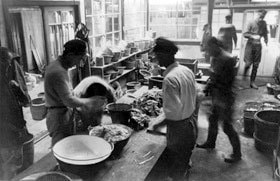
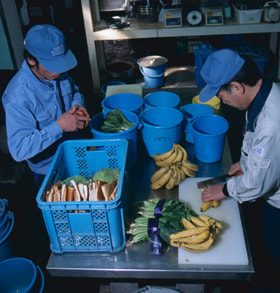
Feed for 400 species of animals is prepared in the feed preparation room. There is a variety of feed for animals in the zoo, including food products for human beings, vegetables, fruits, fish and shellfish, meat, eggs, cattle feed, pet food, natural products (moso bamboo, evergreen oak seeds and acorn), feed developed for animals, and living things produced for other purposes (rabbits, rats, mice and goldfishes).
The major task for the zoo was to supplement the number of animals, so exchanges of animals with foreign countries, including the United States, resumed. Lions, pumas, macaws, skunks and other animals were presented by Hogle Zoo in Salt Lake City, Utah, and in return, the Ueno Zoo presented Japanese cranes, Japanese giant salamanders and Japanese monkeys to Hogle Zoo. In 1949, two elephants eagerly awaited by children came to the Ueno Zoo: "Gachako" (Hanakako) from Thailand, and "Indira" from India which was sent in response to a request letter from Japanese children to Prime Minister Nehru. The arrival of Indira became a symbol of peace, and the event was recorded in the postwar history. In 1951, "Jumbo," an Asiatic elephant, was donated by the traveling zoo committee, and Zoo Director Koga attended a conference of the International Union of Directors of Zoological Gardens, held in Amsterdam, in which he was admitted to join the union as a member. As a result the zoo was internationally recognized. After that, animals came to the Ueno Zoo one after another from zoos all over the world, and it became lively. (continued in the lower column)

In commemoration of the 100th anniversary of the zoo founding in 1982, the zoo tried to artificially breed gorillas, but the attempt did not succeed, and was discontinued in 1990. In order to facilitate a new breeding program in which a group of animals are fed, "woods where gorillas and tigers live" was built between 1988 (the year the basic plan went into effect) and 1996, taking a total of eight years.

In the herptile house opened in 1999, biotopes of a waterfront area, savanna, desert and forest environments are reproduced at respective sections. In order to have animals sunbathed and keep them warm, those sections are filled with natural light, and plants are cultivated to maintain appropriate views.

Generally, a group of animals were kept in facilities in the United States and Europe, but only one animal was kept per house in most zoos in Japan. Therefore, there was an urgent need to breed a group of animals in order to preserve species. The Japan Association of Zoos and Aquariums organized the Species Survival Commission in 1988, and started to preserve and breed precious animals. Zoos and aquariums have expanded their sphere of activities, from displaying and keeping animals to assuming a role of preserving species and breeding precious animals in so-called "Zoo Stock Plan."
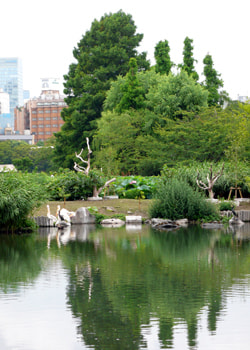
Shinobazuno Pond, West Garden, Ueno Zoo
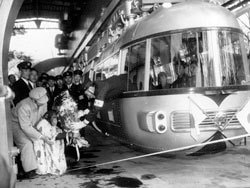
With an increase in the number of animals, the zoo extended its grounds along Shinobazuno Pond and opened the West Garden in 1957. The monorail system began a service to connect the East and West Gardens. Then, "Aesop Bridge" connecting the two gardens was built in 1961.
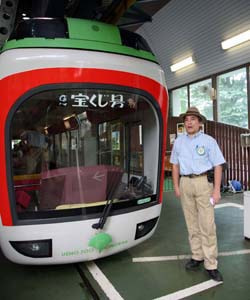
The present monorail system is the fourth system, and has been operating since 2001. There are stationmasters at monorail stations, and they greet visitors.
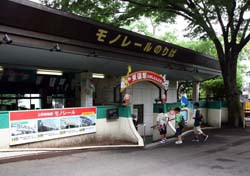
The monorail system is very popular among children. A little journey begins.
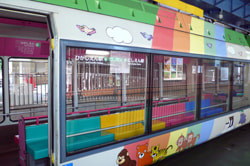
Colorful and enjoyable interior
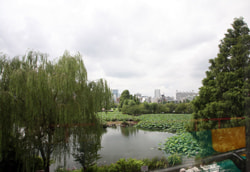
Although it takes a short time to go from the East Garden to the West Garden, passengers can see Shinobazuno Pond under their eyes.

Shinobazuno Pond, West Garden, Ueno Zoo

With an increase in the number of animals, the zoo extended its grounds along Shinobazuno Pond and opened the West Garden in 1957. The monorail system began a service to connect the East and West Gardens. Then, "Aesop Bridge" connecting the two gardens was built in 1961.

The present monorail system is the fourth system, and has been operating since 2001. There are stationmasters at monorail stations, and they greet visitors.

The monorail system is very popular among children. A little journey begins.

Colorful and enjoyable interior

Although it takes a short time to go from the East Garden to the West Garden, passengers can see Shinobazuno Pond under their eyes.















